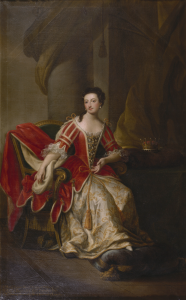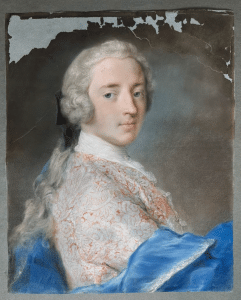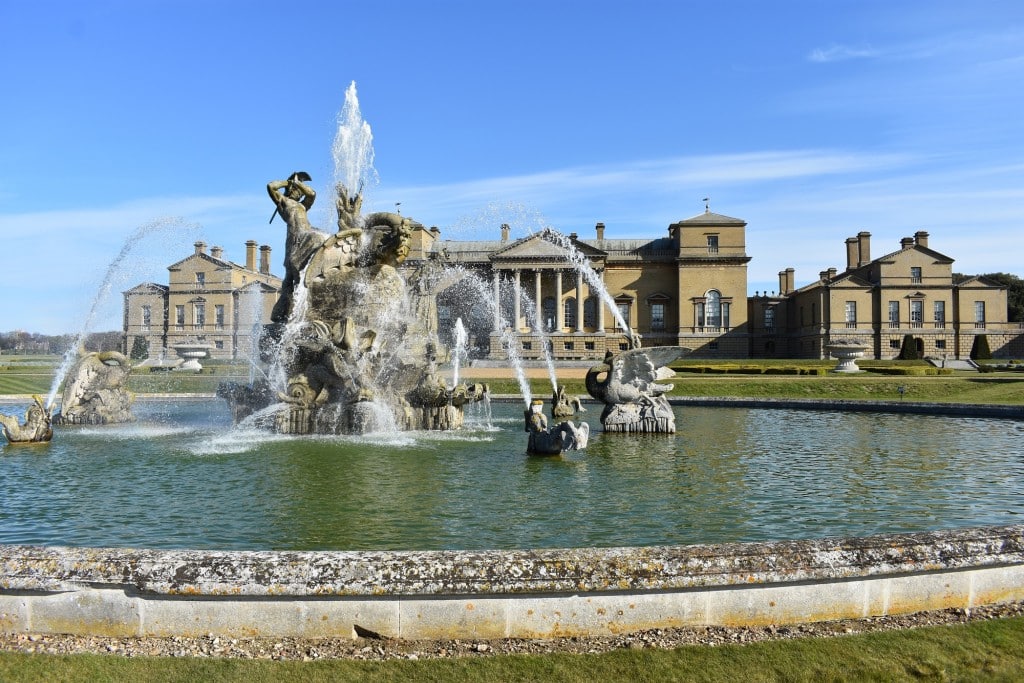
St George and the Dragon
April 23, 2021 | Treasure tales and archive snippets | 4 minute read
Between 1849 and 1854, the south lawn at Holkham was remodelled to create the series of terraces and parterres we see today. The centrepiece of this scheme is the Grade II listed fountain created by sculptor Charles Raymond Smith. Although today we refer to the central grouping as Perseus and Andromeda, in the 19th century, they were known as St George and the Dragon.

Both stories are incredibly similar. The tale of Perseus and Andromeda (also depicted in a painting in the Saloon) is one recounted in Greek mythology. In it, the hero Perseus spies the beautiful Andromeda tied to a rock by the sea, where she is about to be devoured by a sea monster. Her father left her there as a sacrifice to appease Poseidon, who had been angered when Andromeda’s mother boasted that her daughter was more beautiful than the sea nymphs (Nereids). Perseus is struck by the beautiful princess, and flies down to rescue her from the monster. Perseus and Andromeda later marry.
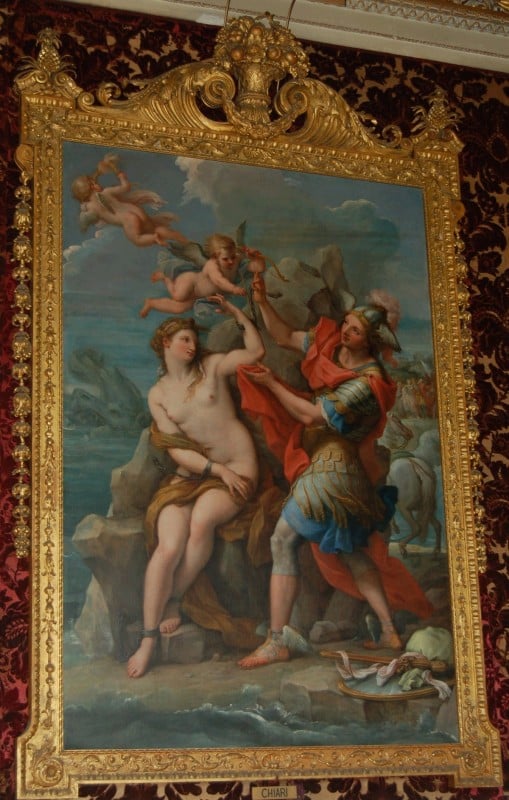
The story of St George and the Dragon dates to the Medieval period, first appearing in the 11th Century, with the most famous version being written in the 1260s. This version recounts how a village was plagued by a vicious dragon. The villagers offered it daily sacrifices of sheep to appease it, however, soon all the sheep had been eaten, and the villagers then drew lots to decide which of their children would be sacrificed. One day the lottery drew the daughter of the king. St George, happening upon the Princess, mortally wounded the dragon with his lance, and then used the Princess’s garter as a leash to lead the dragon to the nearby village. After the villagers swore to convert to Christianity, he killed the dragon for them.
Within the fountain there are artistic motifs that can link the sculpture to either story: the Princess appears as a medieval English lady, and she is not tied down as Andromeda was; the hero, however, is not shown on horseback as is typical of depictions of St George, and is killing the dragon with his sword rather than his lance. It is likely that the tale of George and the Dragon was based partly on Perseus and Andromeda, modified for a Christian audience, which could explain the confusion over the title of the sculpture.
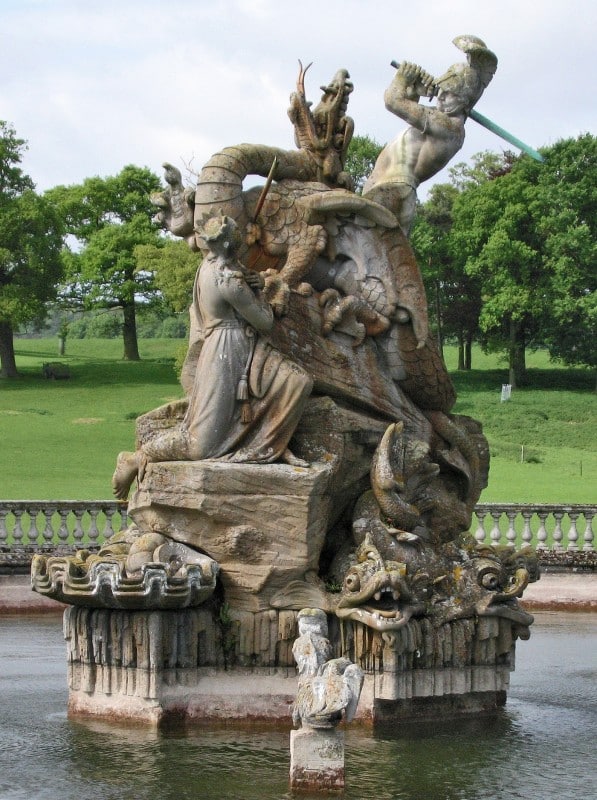
Despite being a beautiful centrepiece to the new gardens, the fountain has caused more than a few engineering problems over the years, the first arising even as it was plumbed in; during this process, it was realised that the enormous volume of water required by the fountain could not be met by the current water supply to the Hall, and a new supply would need to be built.
The water was originally supplied by a reservoir at the top of the deer park, which was fed by a borehole located under the former stable block in the courtyard adjacent to the Hall. From here the water was pumped uphill and then allowed to flow back to the fountain. It would use 400 gallons (1818 litres) of water per minute and as a result, the fountain could only be run for 20 minutes at a time before the water source ran out.
In 2009 this system broke down when the iron pipework running under the south lawn burst in multiple places. A restoration programme began in 2015 to create a new underground pump room that recirculates water from the bowl of the fountain through the twenty-five water jets secreted in the sculpture. A filtration system was added, and stone restoration work carried out to the sculpture itself. The fountain has been in good working order ever since, and during the summer of 2020 it was fully drained and cleaned by the team in the Hall (Read more about the deep clean here).
View all latest blog posts here.
Back to Journal Back to Journal


